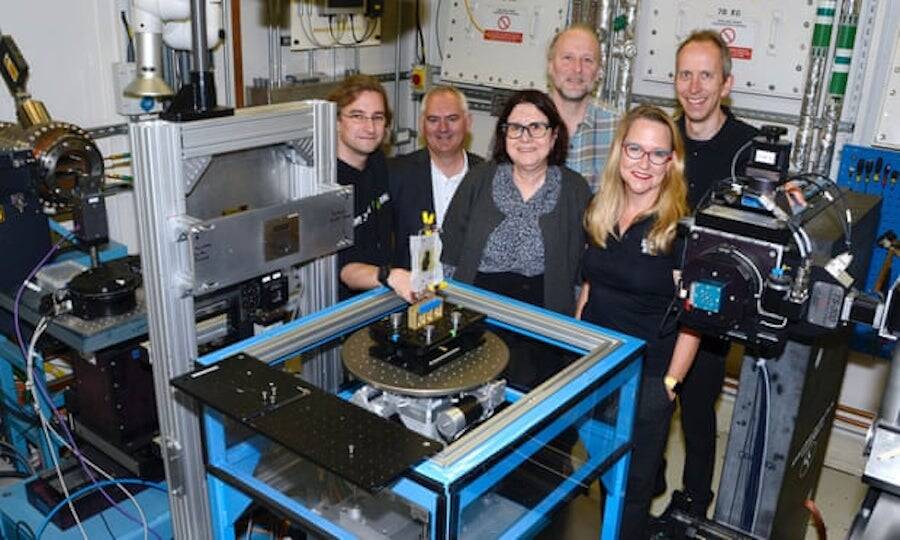The fragile scrolls of the Herculaneum papyri are an inestimable cultural heritage: over the years it has been impossible to read them in their entirety and even opening them has been a problem.
Today, scientists plan to use AI and machine learning to read the Herculaneum papyri without opening them.

The eruption of Vesuvius in 79 AD devastated the cities of Pompeii and Herculaneum: everything was buried by a deluge of ash and lapilli.
Everything, including a precious library full of papyrus, was defaced by the inferno that broke loose.
The papyri of Herculaneum? rise
The Guardian newspaper today he writes that a combination of artificial intelligence and advanced x-rays will make the contents of these charred Herculaneum papyri readable.
“Although it is possible to notice that there is writing on each scroll of the Herculaneum papyrus, opening it would require the papyrus to have its own flexibility. And there is no more flexibility,” says the professor Brant Sales, head of research and computing at the University of Kentucky.
The two papyrus rolls that Seales and his team will use for their project belong to the Institut de France in Paris.
The papyri of Herculaneum
In 1752 an extraordinary collection of about 1800 charred scrolls was found in Herculaneum, a coastal town west of Vesuvius and less than 10 minutes from Pompeii.
In terms of historical importance, the one incorporating the Herculaneum papyri is the only library to survive intact from antiquity. Most of the papyri are kept in Naples, my city, in the National Archaeological Museum.
According to the opinion of some archaeologists, the structure where the discovery took place (for this reason called "Villa of the Papyri") belonged to Julius Caesar's father-in-law.
Herculaneum papyri: a prohibitive undertaking
Attempting to date and decipher the documents proved extremely difficult. When opened, the papyrus shatters and the ink on them (a layer of a tenth of a millimeter) dissolves practically instantly.

The superimposition of the charred layers in the scrolls of the Herculaneum papyri makes them practically impossible to read. Of the 1800 found, operations were carried out on 500 of them (and only 200 were completely unrolled), allowing the reading of only 150 fragments.
Here's how we will read them
Brant Seales and his team have developed an innovative method that no longer risks destroying the Herculaneum papyri. In previous tests this method (which combines AI and It contained fragments from Leviticus, the third book of the Christian Bible and the Jewish Torah.
Unlike the En-Gedi parchment, however, many of the Herculaneum papyri were not written with metal-based inks.
For this reason, in normal X-rays practically no contrast appears between the carbon used for writing and the papyrus base. This is effectively reduced by the fire of the eruption to another piece of coal.
And proximity tourism comes in play advanced synchrotron located in the UK. A machine capable of projecting a brighter light than the sun.
The device uses electrons to produce really, really bright light. It is used to research everything. And when I say everything I mean from fossils to airplane engines, passing through viruses and vaccines.

Seales thinks the tool, called the Diamond Light Source, will provide key information on the Herculaneum papyri. How to read what the synchrotron will allow to see? The research team will use machine learning to join, fix, decipher the fragments of writing that alternate on the various overlapping layers of the papyri.
It's like reading a book without opening it, not only proceeding horizontally to read, but in 3 dimensions, "swimming" between layers of words.
By showing the system the scrolls already opened, the artificial intelligence will learn to recognize what is needed. Ink pigments, position of letters and other parameters that will lead to reading writings that are now invisible to the human eye.
“In the coming months we will refine the technology so that it can be easily applied to unopened rolls,” Seales says.
What will be written there?
From what we have managed to come up with, the scrolls seem to contain works by the philosopher epicurean and poet Philodemus of Gadara. There is a strong possibility that they also contain texts in Latin, given the custom of ancient libraries to host sections in the two languages.
New ancient works
Dirk Obbink, a papyrologist at the University of Oxford, is working with the research team. He can't wait to find out what the Herculaneum papyri hide.
“Only last year, a previously unknown work emerged from the fragments analyzed with the old method Seneca. We may discover other incredible rarities."
The ancient collections may contain hitherto unknown Sappho poems. Or perhaps the little treatise that Marcantonio wrote about his drunkenness.
Who knows, perhaps there is even a text in which the inhabitants of Herculaneum imagine the future. Certainly they would need a strong imagination to predict that they would become an open-air museum, having lived in the ashes for nearly two millennia.

